
Too often people seek training after they’ve had an encounter or violent situation. Criminals look to exploit us for one thing that we all possess. Listen on to find out what that is. Today’s guest is Tim Larkin. Tim is the founder and creator of Target Focus Training and is well known for self-defense and close combat training. During the last 20 years, he has trained not only law enforcement, the US Navy Seals, Army Special Forces, and the US Border Patrol, but also corporate clientele from around the world. He is an author and a public speaker in over 40 countries.
“When it comes to your self-protection, your smartphone is used against you and predators absolutely look for it. You are disengaged, and you’ve given up your hearing and your sight.” - Tim Larkin Share on XShow Notes:
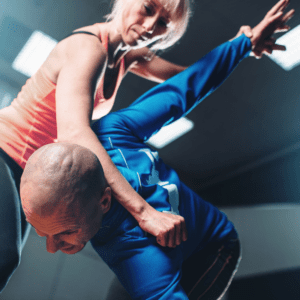
- [0:52] – Tim describes his background and how he found himself passionate about combat and combat training.
- [2:43] – Initially, Tim’s goal was to become a Navy Seal.
- [3:39] – Tim’s eardrum was busted during a dive with the Navy Seals, and he lost control of his body. This injury changed his career trajectory.
- [6:02] – Because of his extensive training in hand-to-hand combat, Tim became involved in a different program.
- [7:50] – At the time of 9/11, Tim began working with civilians.
- [9:02] – You should always be proactive.
- [10:58] – Mentally, the injury was devastating for Tim.
- [13:29] – None of the experiences he has had would have happened if he had the traditional Seal career he planned on.
- [16:26] – Once someone experiences something challenging, they then become proactive to make it not happen again.
- [17:49] – The biggest threat is the smartphone.
- [19:18] – To demonstrate this danger, Tim shares the story of a bus robbery. You can watch the video here.
- [21:49] – Behavior with your phone becomes second nature.
- [23:04] – We spend our downtime on the smartphone, but Tim always keeps one ear out.
- [26:03] – There are tons of positives about smartphone technology, but in public, it can be used against you.
- [27:46] – Tim shows how to detect a possible predator with a personal anecdote.
- [30:41] – We can’t pick out predators. It is impossible to tell as they blend in.
- [32:15] – Tim interacts with everyone assuming they are violent to ensure safety.
- [33:26] – As a society, we can get away with a lot of different types of social interactions, but anything you do or say can trigger someone else.
- [35:33] – If you understand the predator's role, everything is backed up by the possibility of violence.
- [38:10] – Highly recommended is Robert Green’s book Law of Human Nature.
- [39:59] – Study human behavior and you’ll learn about others and yourself.
- [42:00] – When is it okay to use the tool of violence? When you are devoid of choice.
- [43:15] – Women tend to me more in tuned to non-verbal cues than men.
- [44:36] – The more you learn about human nature, you have these tools you can reference.
- [46:10] – Tim gives some examples of when violence is the answer.
- [48:29] – When your life's on the line, you need to have tools at the ready.
- [50:03] – There are parts of the body that you simply cannot protect. The goal is to take the brain out of the equation.
- [52:00] – For criminals, violence is their currency.
- [53:51] – Tim explains what cause state is.
- [56:12] – Your brain is incredible and if you give it permission, it will solve problems.
Thanks for joining us on Easy Prey. Be sure to subscribe to our podcast on iTunes and leave a nice review.
Links and Resources:
- Podcast Web Page
- Facebook Page
- whatismyipaddress.com
- Easy Prey on Instagram
- Easy Prey on Twitter
- Easy Prey on LinkedIn
- Easy Prey on YouTube
- Easy Prey on Pinterest
- Tim Larkin on YouTube
- Tim Larkin’s Website
- Target Focus Training
- Tim Larkin on Instagram
Transcript:
Tim, thank you so much for coming on to the Easy Prey Podcast today.
Hey, Chris, I really appreciate the chance to speak with the audience.
Awesome. Can you give me and the audience a little bit of background about who you are, what you do, and how you started doing it?
I'm a military kid. I grew up on a military base. My father was an officer in the Navy. I lived all around the world and was basically taught early on a lot of martial arts and combat sports by the Marines. The Marines basically were circuit dads at each one of these bases—the ones that weren't deployed—and so I was immersed in combat sports early in my life.

My dad's last assignment was he had a ship. He was stationed on a ship over in San Diego. We lived on Coronado Island and we lived in Navy officer housing, which literally my back fence backed up to the Silver Strand Highway. Across there was this huge compound with a big fence and an obstacle course that had all these crazy things.
We quickly found out one night on a Sunday night—my dad was gone, he was deployed, and my mom had just put us all to bed. I was probably 12 years old and all of a sudden across the street, it sounded like World War III went off. There was automatic gunfire, explosions, everything, and my mom had no idea what was going on. We could see it because it literally was our backyard.
We all got up and we were in our pajamas and everything. The lady next door, who ended up being one of my mom's really great friends, Sam Christiansen, ran over with two glasses and a bottle of wine and she's going, “Carol, don't worry. It's just the SEALs.” Then she explained what Hell Week was. That was […]. My brother and I were just like, “Oh, what is this?”
My goal was always to be a SEAL. I did that, I got selected. I went through officer school. I was an ROTC guy at USC. It was the only deal I had to make with my dad—just give me the Reader's Digest. I was up against 2500 guys to get two slots to that. I did it. I flew to DC. I talked to the detailer. I told him, “I'll never quit,” and it was true. I flew through training. I knew everything about training. I made friends with the SEALs when I was a young kid. I understood training inside and out. I had a really unfair advantage.
In my group in one hell week, I flew through every evolution—I had two weeks left. I had already been selected back then. The hot team to go to SEAL team four—they’re working in counter-narcotics. If anybody has watched the show Narcos, that's what was going on during that time, and that was all the action. I got that slot, so I was very excited about going to that.
I had a couple of dives left before we graduated and went to airborne school. In one of those dives, I was a knucklehead, I was congested. I went down. It was a very easy dive. We're doing a traditional frogman thing where we're tying explosives to concrete obstacles—no big deal. An underwater wave hits me in the ear where I was congested. First, my eardrum goes up into the inner ear, empties out my semicircular canal fluids, and a cold spike goes up, warm fluid goes out, and I lose all sense of balance.
I had been through training, I had had my butt kicked, I had been hurt, I've been put down. I always overcame everything. This was something that was a true injury to the human body. I lost control of my body, I lost control of my balance. The only way I got up was by pulling on the rope to the inflatable boat that was above. I knew I was pulling myself up but I felt like I was pulling at 45 degrees.
The reason I'm giving you this detail is when I got up to the top, my head was flopping, bleeding, everything. I knew as soon as they pulled me on board and the corpsman who was there, a great guy, got out his equipment and looked in my ear right away. I could tell just by his response that I was done, that I injured myself so bad that there's no way I was going to be able to pressurize diving.

Here I am two weeks before I'm going to my dream job and getting in there and my whole world gets turned upside down by injury to the human body. What's interesting is I ended up going to a very different career. I'm in the intelligence community in special warfare. I got involved in all this stuff that leads to what I'm doing today.
At the same time, the world changed. The Berlin Wall just came down and the Soviet Union was no longer the big threat anymore. We had to change our tactics, especially in the special operations community. We have to start putting hands on people again. We really hadn't done hand-to-hand combat training really since Vietnam at that point. That's when they invited me. I was on the admiral staff as an intel kid and I had no business being there, but they liked me and kept me. They knew I did very well in training.
They started looking at hand-to-hand combat and bringing in people from all over. The reason they had me was from all my training over the years with the Marines, I had black belts in Judo, Tae Kwon Do, and Tang Soo Do. I have done a lot of boxing. I was very, very comfortable in that arena and it always fascinated me. That was it, that was me.
They said, “Hey, why don't you come on this pilot program that we're doing? We're trying to find a new system to train hand-to-hand.” Turns out, I got a call from a DEA buddy. He tells me about this crazy guy that literally lives two blocks from my apartment in San Diego in Pacific Beach. I'm like, “What are you talking about? We're bringing in experts from all over the world.” My DEA buddy was just pretty funny.
I have the ability to talk to alpha predators and get good information out of them. They trust me. -Tim Larkin Share on XHe goes—he used a much better choice of words—“This guy's a real jerk, but you'll get along well with jerks.” I understood what he said. I have the ability to talk to alpha predators and get good information out of them. They trust me. If I have a superpower, that's it. I just am fascinated by people like that; I know how to approach them, and I get really good information.
He was my first real chore that way. He came in, long story short, I introduced him to the team guys that I was working with—all senior guys. This guy understood it right away. He had everything the other groups didn't have. He was able to integrate not only the brain and body but also the kit and everything that you could wear. It was very universal. That's how I started to get into it. I became an instructor then I started doing contract work after I got out of the military. I got out of the military right after Panama.
We did pre-Blackwater stuff before there was a Blackwater. We were doing a lot of work in South America, a lot of work in Caracas and Venezuela, and trained a ton of people in the system that they were talking about. After 9/11, I broke off from my partner at the time. He wanted to go in a different direction and 9/11 was where I started working with civilians a lot. I was invited by a lot of corporations to train their security teams for overseas negotiations and a lot of them are oil companies that go into really dangerous parts of the world and kidnapping was a real situation.
We did that, we would train the security team, but then we'd also train the principals. I remember training the CEO for Mobil. Lou Noto was the guy at the time and he said, “You have to train my family,” and so we started doing that. We weren't sure because what we trained was basically to injure the human body. It's a very specific skillset that you want if you're facing imminent grievous bodily harm.
That's how we evolved in the last 30 years. We've trained in over 52 countries and have 52 instructors that we've created. We've trained hundreds of instructors in the special operations community. It's been a stellar career, but my favorite thing to do is what you and I are doing right now: talking to an audience that probably didn't seek me out.
The reason I like that is that if the people watching don't know who I am, that's a good thing. Because usually, people come to me after the fact. They find out about me after the fact. Seventy percent of people that come to me are people that have had experience with violence, unfortunately, in some way, shape, or form. Only 30% are proactive, so I'm hoping the majority of your audience is in that 30% category because it's great to get this information before you need it.

Yep, that's the goal is to be proactive here and get a little bit of baseline background and knowledge going to point people in the right direction. I love your desire to be proactive with people as well. I did have a couple of questions and it's a little down the rabbit hole, but this is just me personally asking. Was it a pretty big challenge going from, “I know what I'm going to do, I'm going to be a SEAL,” to having this ear canal injury and it just ending overnight?
I'm sure a lot of your folks have listened in the past three years. I think every spec ops guy has a podcast, so you probably have heard some of these guys. You need to hear how they are […] how hardcore the whole group is. I was the golden boy in my class. I was arrogant, I was unstoppable. I didn't really rub it in everybody's faces, but I pretty much was going to be the anchorman, which is the honor candidate for my class and buds. I was that guy.
Then I have this fall from grace. You go from being the alpha that everybody's following and maybe not liking, going to you are a leper and nobody wants to get near you because they're afraid the injury might rub off on you. In their world, that was a weakness, and it wasn't theirs. It's a fear-based thing. You go through training, you know how vulnerable your body is to injury, and then you see somebody like me fall from that and they're like, “Oh, there must be something wrong with them.”
For me mentally and from a challenge standpoint, it was devastating. It was the only thing I did, which was absolutely ridiculous because the attrition rate back then was 75% of people that came in. That's after they'd been vetted and everything, 75%. If you're lucky, a 25% graduation rate. There's no other special operations job in the Navy, meaning I was stuck.
Back then you couldn’t do the lateral transfers that you can do now. Back then, I had nothing. If I didn't make it, I was going to be stuck on a ship and it just happened that they said, “Listen, this kid's been trained in the basics. He understands that we are expanding our command. We need a new intelligence group, but we need people that understand what we do.” That was the only thing that saved me.
The admiral pulled me out and got me trained up in intel back East. I came back and I had a position that was ridiculous. What's amazing is my career path, that injury defined me. In fact, I'm so empathetic to people because I was bigger, faster, stronger. I still have the presence. I'm not the 27-year-old uber-wonder that I used to be, but I get that.
I truly understand what it's like to be bigger, faster, stronger, and then get injured and you have no control over your body. -Tim Larkin Share on XWhat's so interesting is that I truly understand what it's like to be bigger, faster, stronger, and then get injured and you have no control over your body. To be able to share that with the people, to sit there and say, “Listen, as amazing as we are, the world we live in with the technology, all the advances that we have, information at our fingertips, all of this, it's my job to remind everybody that, listen, you still do live in this physical world and there are some things he has to be aware of.”
To me, the injury represents the change in my story to where I never would have met the instructor. There are so many things that wouldn't have happened if I didn't have that injury. Not only meeting the instructor but meeting the instructor, you get the first truly credentialed special operations to separate hand-to-hand courses put into the official system. The SEALs train with a lot of different people, but very few people have coursework actually designed and put into the curriculum.
It was an amazing thing for a young officer to go through and then my career that I went through—I told you I had the CEO of Mobil. I've met celebrities and met people at a level that I never would have been introduced to. One of my longtime clients, a great friend, and who puts me in some of those interesting situations in the world is Tony Robbins. He met me through just a random thing. All of that wouldn't happen if I went into my traditional SEAL career.
My younger son recently had a situation where he was recruited by the Yankees. He was going into all-league athletics at his college at Chapman. He was going into triple-A with the Yankees, got rear-ended, his back got screwed up. He couldn't produce the torque that he did on his hitting all the time and it was interesting.
We had this conversation. I said, “I hate to see this happen to you, but it's going to be interesting to see what you do with this.” He knew exactly what I was talking about because we were similar ages when this happened. He had a very different situation. I think I easily could have gone down another road if I went into self-pity and all of that, and it was tough. I did have that time frame. I did mourn the loss of that kid that was the superstar. I tell people all the time not to be airy-fairy about it or anything like that, but challenges like that always bring opportunities. You may not see them right away.
I don't feel I've worked a day since I left the military because I love what I do and I've been very fortunate in how I've done it. It was not planned out. It was truly just an interest I had in helping. Like what we're doing right now, I have a real interest in making sure that there's something in this interview that somebody hears. I don't know who it is, I know somebody in the audience is going to hear something that's going to make a difference in their life. They're going to do something different than they normally would have done because they heard some information here and it's going to minimize the chance of violence coming into their life.
That's the ultimate goal with all my clients. I don't want to turn into super-ninjas. People like me that actually take it to the levels that I take it, my instructors, we’re those mutants that are just a little bit off in this stuff because we take it to insane levels. The real message for everybody is that's not the goal. You really don't have to have years and years and years of training to create a situation where you minimize the chance of violence coming into your life.
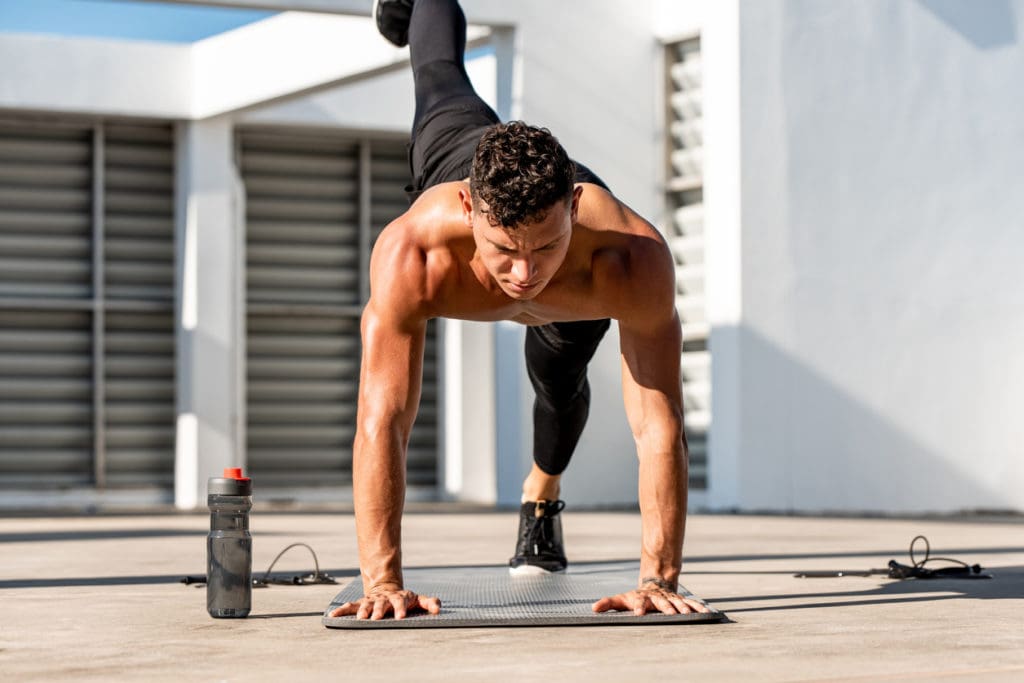
The physical training that I do, when I show you where to go in the human body, is the best way to get you in the correct mindset. We just did a seminar last weekend and what people always talk about is, “Wow, the fact that you made me go through the human body and learn how to break things so they no longer work—either structure or sensory system—in the human body.” We're very explicit about that and very straightforward because you need good information if your life's on the line.
What's interesting is that once they've experienced that, then they are far more open and far more proactive about changing any unnecessary risks they've been taking in their life. It just seems to have that physical experience of you actually having to go through and say, “Hey, if I ignore all the things that I could do to minimize stuff coming in my life and I'm facing imminent grievous bodily harm, now it's just my brain, my body, and whatever tool I can grab, and what I have to do to another human being to be able to survive. Unless I have no choice, I really want to make sure I've minimized the chance of that ever happening to me.” Behavioral change is my huge goal with everybody and it's not hard to do.
Let's talk about it. From your experience and what you've trained people on, what are the situations where people don't realize that they're putting themselves in danger?
The number one threat to everybody is this thing. I don't say that lightly.
For those that are listening, what is in your hand?
I'm sorry, I have my smartphone in my hand. I have an iPhone there. The reason I say that to everybody, the reason I'm talking about being challenged is it's amazing. What I can get done on my smartphone 10 years ago would have required me to have my big desktop and everything. I can do things instantaneously on my smartphone. It gives me mobility, it gives me unbelievable access to things that I never could have before. I marvel every day about being able to do international transfers. I have clients from all over the world. I can talk to anybody all over the world just off of this device.
Here's the problem: I also willingly use it in public at times. Oftentimes, I will take not just the one sensory system of my eyes, but I'll also have headphones, so I've given up two primary sensory systems of the human body. It's the number one thing that predators look for in men and women, especially in urban environments. They look for you to do that.
What's interesting is, I remember years ago in New York taking the subway. There’d be some interaction in the old days. Most people would have maybe a paper or they'd be reading something, but they still had their sensory systems available to them. You go on public transportation now in any major urban city, everybody's focused.
One of the things in one of the videos that I show is a video of a Seattle bus robbery. There is a guy walking down the aisle of the bus and you can tell it's all tech workers, all very well-to-do people, and he's holding a gun and he's literally just robbing people. He's just taking things up. Nobody is talking to anybody.
The guy that he gets to sees the gun coming in front of him. This guy looks up from his phone, he recognizes what's going on. This hand is his phone and this hand he redirects the gun. He redirects the gun and he goes forward so it's actually a very good move. He doesn't know he's probably doing it, but he redirected the vector so the gun no longer intersects him and then he's right in front of the guy. I think, “Great.” You look at the video, “Great, he's got his phone, he can use it as an impact device on the guy. We're going to see this, right?” What do you think he does with his phone?
He drops it and makes a phone call. Start the video?
He has a long coat on, it was a winter coat that he has on, he is taking the phone and stuffing it in his pocket. I'm telling you guys this and you're probably thinking, “No way, Tim.” Yes. I have it on my YouTube channel. It'll show you the contact information on it. You can see it for yourself. The first time I saw it, I was dumbfounded, and what's really interesting is when I did this talk at Google, I opened up with that.
What was interesting was that everybody in the Google audience—I do this deliberately to people—I show it first, and I don't say anything and nobody notices that he does that. In fact, in their brain, they're all going, “I don't want to crack my screen.” Boom. It wasn't until I pointed it out that everybody was shocked.
Think about this: you have a gun pointed at you, you redirect the gun, you're coming in, and your life's on the line at this point. This thing, this smartphone is so powerful, so embedded in you that you're going to protect the phone before you protect yourself. That's how much these things own our brains. Listen, I'm not a Luddite. These are going nowhere, these technological devices, we just have to be aware of them and how powerful they are.
Do you think that part of that is because there's this kind of embedded muscle memory where we're so used to our everyday lives, when something happens, we just put our phone in our pocket and we put it away because we don't want to break it, that that behavior is a second nature? It's not so much that he thought, “Oh, gosh, the guy's going to break my phone, I better put it in my pocket. Well, I've got this phone, I need to put it away.”
Yeah, that's exactly it. It is something he does time and time again. People always say, “I'm going to raise the level of the event.” No, you’re going to descend to your level of training, you will drop to the minimum. What was his training? His training was “I always put my phone away, I do this,” and his brain said take care of the phone first. It was a very logical thing for the brain because if you tell the brain to do certain things, even subconsciously, even kind of unconsciously, it will do that. Basically, in his mind, this was so attached to him and so necessary to him that he protected it rather than using it as an impact device to save his own life.
People always say, “I'm going to raise the level of the event.” No, you’re going to descend to your level of training.” -Tim Larkin Share on XThat's probably my best example of the downside of technology and how addictive these things are. I look at my screen time sometimes and even I go, “Damn, that's a lot.” What I do is good and bad. I never need to have any downtime. Waiting, I can listen to a podcast, I can read my Kindle, I have my Kindle app on there, and I go through tons.
I've gone through unbelievable amounts of information on my normal downtime. If I'm shopping, if I'm doing things, I do weight vest walks and it's great. I just learn. For me, I always keep one ear free. I listen to it in mono, which is no big deal, especially for podcasts. I make those things and I force myself to scan and look. I'm not looking at my screen while I'm doing that.
What I catch myself doing is I make myself just be aware that I'm about to enter a public area, especially when I travel. I travel a lot. When I travel to a city where I really don't know what's going on, I'm probably going to risk a conversation with somebody who I really don't want to talk to rather than do the thing where I don't have to do it just because of that awareness. I try to educate myself on it and it's tough.
I make no bones about how tough these things are. I know it's the thing everybody hears—don’t run with your iPods and everything. You’ve got to make it really real for people, and I haven't found a video yet that doesn't grab people like that video grabs because it's just so unbelievable when you see it and yet makes so much sense. Awareness of it is the first step, just like in anything. We're unconscious of how much we allow these things to control us, basically, in a very positive way most of the time.

For safety, run with one earpiece in…
When it comes to your self-protection, it's absolutely used against you each and every time, and predators absolutely look for it because you're disengaged. The sensory systems that you're giving up are really big time. Giving up your hearing and your sight is really key. I know, probably, people have heard this before, I get it, yeah. No, that's why you need to see at least some video reinforcement of this and then obviously, this is where the physical training can really help take care of that.
When you see examples—fortunately for me, unfortunately for society—in the advent of the internet and video, we have closed-circuit TV videos of tons and tons of violent assaults. It's interesting when you see how things were used. There's one recently in Seattle where the predator got him to redirect and look at his phone. He said something about his phone. When the guy wasn't looking, he grabbed him, dropped them on the ground, and just stomped them. It was this guy's total focus on the phone that he exploited to use.
It was this guy's total focus on the phone that he exploited to use. -Tim Larkin Share on XI hope everybody understands it's a reality, this is the world we live in, and there are tons of positive things about it. I'm not even going to get into the idea of how much time we spend on the phones or anything like that. That's a whole separate conversation. I am not an expert in that.
What I am an expert in is telling you how it will be used against you when you're out in public. If you are displaying this, if you're walking down the streets, if you're doing anything where you're totally immersed and there are those around you that you do not know, you are taking a tremendous risk.
It's funny, and I'm going to tell an anecdote that leads to a question. Some coyotes moved into our neighborhood. People think, “Who cares about a wild coyote?” Well, I've got a dog, and I walk my dog. These particular coyotes in the past have been so aggressive that when someone opens their front door, the little white fluffy dog runs out to pee on the grass. The coyotes have run up, grab the dog, and take them away. They've grabbed dogs on leashes and tugged at them.
When I'm out walking, I have this sense of, “OK, I need to be looking for the predators. I know what to look for. I know what their ears look like in the grass when they're starting to poke up their heads. I know what their noses look like.” I'm kind of scanning the bushes as I'm walking around the neighborhood. I think there are some extensive neighborhoods. I do that when I'm walking, but what should we be looking for? How should we be looking to identify potential predators when we're out and about?

That's the fascinating thing. I'll give another example. I took my son to Clark County Detention Center. I do a lot of work with corrections. I study a lot of the prison gangs and I've met a lot of the top predators in those gangs and interviewed them. I do so because in the environment of a federal penitentiary or state penitentiary where people are there for life and they are interacting with each other, it's really this petri dish of what I call asocial violence, and asocial just means no communication.
I took my son there to the Clark County Detention Center. This is where they all get held up until they get through the legal process and then they get shipped off to wherever they're going. Connor was probably 14 at the time. My really good friend Jason had him go and we're about to go into this area where there are 75 prisoners and one garden that was just an open area, the eating area, these guys were seen as a low threat but they were real criminals. They were there. A lot of more violent criminals.
I could tell he was a little nervous so he was hunched over and put his hands in his pocket and everything like that. Jason goes, “Hands out of your pocket and stand up straight.” You're looking right in. He goes, “When you walk in there, they're all going to look at you. The first thing they're going to say is, ‘Is this somebody who needs to be killed, is this somebody I don't need to worry about, or is this somebody that I need to fear?’” He goes, “Those are the three things they're going to assess. You want to be the last one. You want to be the person that's alert and you're going in. When you go in, don't show anything.”
He goes, “Don't put your hands anywhere. They're going to want to see your hands to make sure you're not a threat. When you go in just […].” We go through the whole thing. This is in Las Vegas. Clark County Detention Center is literally right next to Fremont, the Fremont area, the Fremont Street.
When they process people out, they literally dump them right out. They literally walk right out and they blend in right away in Fremont. I asked my son, “Hey, Connor, why do you think I took you there? What do you think the goal is?” He said, “I don't know, dad. You wanted me to make sure what it's like to be in prison so that I'll never go to prison or don't do anything bad. You wanted to do the scared-straight thing.”
I go, “Hey, listen, if you're dumb enough to do something criminal and get yourself in prison, that's on you. You know how we raised you. I'm not worried about that at all. You saw the presentation. You saw everything. I just showed you people coming out into the general population. They're walking down Fremont Street.”
He goes, “Yeah.” I go, “Where are they?” He goes, “What do you mean?” I go, “Where are they? Point them out to me.” “Well, Dad, I can't. I don't know.” I go, “Exactly. So the next time you and your buddies are out and you're out doing something, maybe you think you're going to make that cute comment or that smartass remark”—he's not that kind of kid, but I was just pointing it out to him—“but you never know who you're dealing with. You don't know what their background is. You don't know anything. Outside of your own social circles where you know people, you have no idea. I'm hoping that you're going to keep that in mind every time you interact with people.”
The way I really answer what you're talking about is we can't pick out predators. What's really interesting is the majority—the real nasty ones that I've met—are very physically unimpressive. They blend in. They're not there.
In the interaction, perceived slights, stuff that you can't do, is really important. -Tim Larkin Share on XSome of the prison gangs have some unbelievable monsters that are there. They are the physical monsters that you would imagine them to be but a lot are just average-sized. They're there but they're very capable of what they do and they will respond with violence when necessary. In the interaction, perceived slights, stuff that you can't do, is really important.
When I'm out, I conduct myself—it may sound paranoid to people at first, but it's actually a great way to be—that everybody I interact with that I don't know is six seconds away from a shooting spree and I don't want to be the person to trigger it. How would I interact with that person? I'm nice, considerate, and polite with people to the point where I want people to relax.
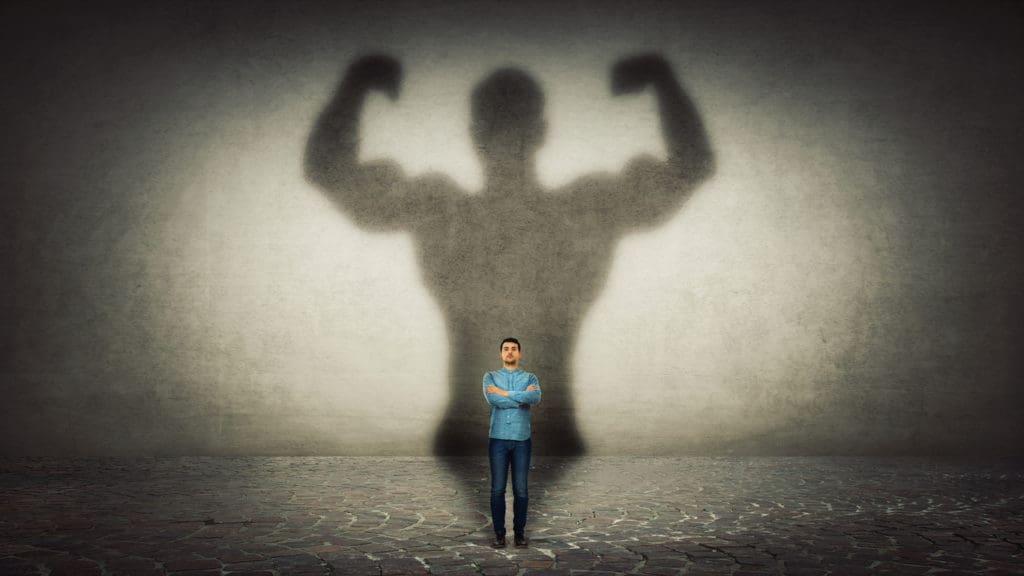
I'm a good-sized individual. My wife tells me a lot of times, “You don't realize how intimidating you are.” I laugh at it because I just don't see it that way, but when I meet people and I have conversations with them, I want them to feel very comfortable around me. I want them to think I'm just this old meathead, goofy guy. If they start treating me like that, they start joking with me or giving me a hard time. I know I have them at that point because now, if I ever need my information, it'll be a complete surprise. I'm not coming off as something like hardass or anything like that because if you go looking for it, you will find it.
The best way to interact is not trying to figure out who's who. It's really trying to sit there and say, “How do I interact with people I don't know?” You want to be alert, absolutely. Situational awareness is very important and stuff, but you also can inadvertently trigger somebody by being disrespectful. We as a society can be really rude or impolite to each other. We can say things.
I work with a lot of very successful entrepreneurs and founders of companies, and these guys are women. They're drivers. They go through and they're very direct and blunt in their conversations a lot of times. What gets them in trouble is when they take that outside of their business world and they interact with other people who are not in that world. They can run into that one person who's like, “What?” It goes like that. They've never seen it happen because they just don't understand human nature.
I always wonder if there's a homeless person on the side of the street and I'm walking by, I've had this go both ways. If I make eye contact, it's like, “Why are you making eye contact with me,” and it's confrontational. If I don't make eye contact, it's like, “Why are you ignoring me, pretending I don't exist,” and causing a confrontation? Sometimes, it seems like no matter what you choose to do, you're almost…
You're dealing with mental illness on a lot of that. A lot of it is just meant to see. You just have to be smart about it. I generally don't make eye contact unnecessarily. It's really interesting. A good friend of mine, unfortunately, passed away a couple of years ago. He's a big fitness trainer, Charles Poliquin. He was kind of like me. We traveled all over the world and did things. We connected time and time again. He shared a story with me that I shared in my book, When Violence is the Answer. It's really interesting. It will give you insight into this community.
Charles, when he'd go to a new city, usually had one or two police officers that would attend his training, SWAT guys or something. He would always ask them. He'd say, “Hey, what gym in town do all the ex-felons work out at?” Whatever gym it was, that's where he went to work out. The reason he wanted to work out there was he said, “Hey, generally, I know the rules. Everybody's polite and nobody's stepping in front of you grabbing weights and taking your rack. Everybody's there because there's that underlying thing.”
If you understand the predator world, especially from a prison standpoint, everything is backed up by the credible threat of violence. What's amazing is how polite that makes you, actually really polite, not because you're fearful.
Most recently, I'm in a really nice gym here in Vegas. I saw a guy. He had all the Russian tattoos. He has eight-point stars on his knees and his shoulders. He had all the appropriate tattoos. He was up there in the Russian mob.
Three different times, we saw each other in the sauna along with a bunch of other people. He engaged me after three times. He started talking to me. What was interesting was that everybody else in there wasn't doing anything bad, but there were some younger guys in there. When I say younger, anywhere from the late 20s to late 30s, very full of themselves and they're making banter and stuff. They had no idea you got this white shark just circling around that's in there.
He's not intimidating. He's just very calm. He was powerfully built, but he was older. He had a belly, but it was a very hard belly. You could tell this guy's done a lot of work in the way he carried himself. But what was interesting was that I knew just from my years, I go, “OK, I know what I'm dealing with here.” I did the interaction where I didn't make eye contact with him the whole time. I was respectful when I went by, but I wasn't weak. I wasn't anything like that.

Then, he made a comment about my tattoos because I have some tattoos. He said, “Oh, those are very nice tattoos. Do they mean anything?” I said, “Yeah, I got a couple of things. These represent my kids,” and stuff like that. He goes, “So your tattoos have some meaning?” I go, “Yes, but they don't have the meaning that your tattoos have.” He smiled. He looked at me and he goes, “I thought you knew something.” I said, “I'm very aware. It's nice to see you relaxing.” We just had that interaction.
The reason I share that story is because I was lucky enough, this is my world. I can pick up signs that other people can't. Those people there had no idea. Had they made a flippant comment to this guy or done anything, not that he necessarily would act on it, but they had no idea what he was. That's my cue with people.
If you want the greatest recommendation on what to study for your overall self-protection and everything, I would immediately go out and get Robert Greene's Laws of Human Nature and get the audiobook and the book on it. That is your Rosetta Stone to understanding interactions with humans. He really does a good job. People really understand Robert Greene.
I'm interviewing him at the end of this month, and I'm really excited about it. He wrote 48 Laws of Power, Art of Seduction, Mastery, 50th Law with 50 Cent—a lot of great books—The 33 Strategies of War. People get very upset when they read it. It's very disturbing that you talk about this. People thought that he was glorifying this behavior.
He goes, “The reason I wrote 48 Laws of Power was because I was in Hollywood and these tactics were being used against me and I didn't recognize them. What I want to do is I want to show this to everybody so you recognize them.”
I think his masterpiece is The Laws of Human Nature because he takes everything from previous books and puts it in a very enjoyable, story-driven learning thing that will absolutely change the way you interact with people. That's probably your greatest protection.
We don't study us enough—how we think and how we react. You'll notice things about yourself when you study. -Tim Larkin Share on XThe physical training, what I have, is the breaking case of war type of thing. It's the last resort. It's basically your personal nuclear weapon. When would you ever deploy it? It has to be a really rare time. The way you minimize the chance of ever getting there is by understanding us. We don't study us enough—how we think and how we react. You'll notice things about yourself when you study. “Yeah, I do that. I didn't realize that.” You'll change some things, but you'll also recognize when some of these manipulations have been used on you. These predators are amazing at it.
I interviewed a guy, Michael Thompson, from the Aryan Brotherhood. He was the former leader of the Aryan Brotherhood. It's a very fascinating interview that I did on my YouTube channel. It was interesting. Michael at one point goes, “Yeah, when we try to make people comfortable, we call it warm smile, cold heart.”
They will use your social against you, they'll make you feel really relaxed, and they're just about to pounce on you. They want to get close enough to you so that they can take action on you. The way you get used to that, again, studying human nature is one thing. The way I train my people is we train in a new social environment, meaning there's no communication. That's the number one hallmark that I get from all my clients that unfortunately had to use the information to save their life.
We have all these nonverbal ways of our body trying to warn us that we ignore.” -Tim Larkin Share on XThey said, “I recognized it went asocial.” What they meant by that was, “Oh, this is uncomfortable.” We have all these nonverbal ways of our body trying to warn us that we ignore, but I can feel in every part of my body that something was wrong. I recognize asocial. If you're in an asocial environment like that, that means you're facing imminent grievous bodily harm. The only thing that's going to get you out of this is using the tool of violence, so you should know when to use it.
Everything that I teach people, I tell them the same thing. The only time it would ever be justified in using this is when you felt the threat was so credible that if you had access to a firearm, you would feel compelled to empty the magazine in that threat or threats. If it doesn't reach that threshold, it's not the time to use violence.
The only time you use the tool of violence is when you're absolutely devoid of choice. -Tim Larkin Share on XYour ego getting hurt because somebody called you a name or somebody did something like that—anything that you have a choice to disengage from, you disengage. The only time you use the tool of violence is when you're absolutely devoid of choice. Knowing how to define that—antisocial aggression, which is all the things that we think we have to respond to but are avoidable, meaning we can make decisions to get out of there versus asocial violence where the last thing you want to do is try to communicate with somebody when they're in an asocial mode. That's probably the hallmark for really understanding how to interact.
Trust your body. Your body has so many unique nonverbal ways of communicating with you that if you're in tune to it, they're there. Sometimes that sounds like it's a spiritual thing, but it's not. It's a very evolutionary thing that we have. Women are far more in tune to their nonverbal than men are in my experience, for the most part. As men, we tend to ignore some of it until it's too late and then we find ourselves in these situations.
What are some of the nonverbal cues?
The hair on the back of the head, queasy feeling in your stomach. It's like, “This guy is smiling at me, but I'm really feeling weird.” I tell everybody to risk embarrassment. It doesn't matter. When an unfamiliar guy gets in an elevator with you, get out and just walk right out. Don't worry if you have to risk embarrassment. Better to do that.
When I hear from people, oftentimes, the story will get to the conflict, but then I always have everybody tell me the whole story. “What were you doing before this?” There are usually one to two times where they knew something was up but they ignored it because they didn't want to be socially awkward. They felt they were being judgmental or something like that. Then, it goes horribly wrong for them and they have to deal with an act of violence.
My whole thing with people is that if you're getting any of these cues from your body, there's something that your body's picking up, but it's just not communicating with you in the normal way. It's saying, “Something's wrong here, don't do this, or don't go here.” In asocial, the more you read stuff like The Laws of Human Nature and things like that, or my book, When Violence is the Answer—you have these tools that you can reference and get used to. It's not a hard thing to develop.
That's the interesting thing about violence too. I say violence, not fighting, not anything that's in there. When you say violence, people know exactly what you're talking about. But to actually use violence to train, to deliberately injure somebody is a very easy skillset. What it takes is intent.
I take this information that normally, the best information is in the worst parts of society. What I'm able to do is I'm able to pull out that really good information, give it to sane, socialized citizens, and then give them a reference point. This is the only time it ever makes sense. Once people understand that, they go, “Great.”
The way I do that is I'll do analogies. I know whenever I talk about gouging the eye, it's really something that really grabs people. You're irreparably damaging an eye and you're blinding a person.
I'll give them the scenario and I'll say, “Hey, listen. You're at the Whole Foods parking lot. You're waiting for a guy to pull out. As soon as this guy pulls out, a Tesla comes in and grabs your spot right away. You've been waiting for five minutes, you're pissed. Get out of the car, […] Tesla points his fingers at you. ‘Hey, man,’ whatever. You immediately knock him on this car, you comb grab his hair, you pull him back, and then you gouge his eye out.” Everybody is like, “Oh.” They have nervous laughter.
Then I say, “OK, I'll give you another scenario. You're at the bar. A guy comes up to you, spills a drink on you, looks at you, and goes, ‘You're too fat to wear skinny jeans.’ That's it. You throw the drink in his face, you knock him down on the ground, and then you just gouge his eye out.” Again, they're nervous. They go, “Oh my God, what are you talking about?”

Then I'll say, “OK, you're at Sandy Hook dropping your kid off. You hear the shots go off, you see two kids drop, and you see the teacher go down. You knocked your kid to the ground. Your kid's safe. You look over and you see the shooter. He's dropping down to do a reload because he has a malfunction in his gun. You know you can cover the distance. You run as hard and as fast as you can, jump him, and knock him to the ground. The first thing you see is his eye and then you gouge his eye and take it.”
In that third scenario is where everybody opens up and says, “OK, how do you do that? What do you do?” Now, they got the right context because it is good information, meaning if you ever need it, it's shown in the worst context. It's shown in bar fights. It's shown in these ridiculous scenarios that these self-defense morons show you macho stuff that'll just fast-track you into jail.
My job, and the challenge that I like, is being able to take this horrific information that normally you just repel from and say, “Hey, wait a minute, there's something useful here. Let's learn the useful part of it, not the criminal part.” What's very cool about that is that the tool of violence works for both parties. It doesn't care if you're the good guy or the bad guy. It's a very inert thing.
Anybody can wield the tool. How the tool is used will determine whether or not it's justified. If it's justified, it will be determined as self-defense and you're fine. If it is not justifiable, then you're going to be entering the legal system. You're going to have to deal with that. The legal system will sort you out.
It's very specific. To me, that's what I love. I love sussing that out for people and getting them to think about stuff they would never in a million years consider. But if their life's on the line, they absolutely need that information. You can't put a value on it.
It's that basic save-your-life type of stuff. I know we're running short on time here. You talked about gouging eyes out, not that I'm recommending people practice these things on your neighbors, but are there other things of violence of last resort?
What you really need to do is understand trauma to the human body. There are areas of the human body that no matter how big, fast, and strong you are, you cannot protect. We talked about the eye, there's obviously the throat, and they talk about the groin all the time. Those are very easy things for us to understand, but there's a whole bunch.
There are approximately 71 areas of the human body that you can put a trauma into and get a big result. -Tim Larkin Share on XThere are approximately 71 areas of the human body that you can put a trauma into and get a big result. The result that you want is to be able to take the brain out of the equation. We've all experienced that. If you touch a hot surface, your hand automatically comes off and then you realize, “Oh, shoot, I burnt myself.” If you step on a sharp object, your foot automatically comes up. That's called an autonomic reflex, a spinal reflex reaction. All that means is that the stimulus or the trauma was so great that the stimulus is going all the way up to the brain and then the brain is deciding what to do, it short circuits, actually gets midway up the spine, and then sends another immediate message back down to that area to say, “Move it before the brain even knows what's going on.”
The reason those injuries are so valuable to us is because if I take a person's brain out of the equation—no matter how big, fast, and strong they are, no matter what they want to do—they have to autonomically respond to that trauma. That's really what we do. We teach people where on the human body that is, how to do it, and to make sure that these aren't magical touch points. These are areas that you have to put work into.
I have a 90-pound girl that was training with us last week. She was able to put her body weight into each thing. Who wants 90 pounds thrown into any of these vulnerable areas of the human body?
The other thing I want everybody to understand is when I train people, I'm not training for combat sports. I'm not training them for a competition. I'm here in Vegas. A lot of my friends are in the UFC. I love it and it's great, but they're a whole different class and they also have the gamification of violence. The way you gamify violence is you take a direct injury to the human body out of the equation. That's what they do.
The last time I looked at the rules of the UFC, there were 31 rules. Twenty-seven were prohibiting direct injury to the human body. The reason being is you're not trying to maim, cripple, and kill your opponent in a combat sport. Whereas on the street, you absolutely want to do that. The reason injury is such an important thing for people to learn is because it bypasses bigger, faster, and stronger.
The reason injury is such an important thing for people to learn is because it bypasses bigger, faster, and stronger. -Tim Larkin Share on XGoing back to the prison situation, they all study anatomy at the highest levels. It's chilling when you think about it. They really understand anatomy, they know where to put the knives, the shanks, the tools, and they know where to strike and where to go because they can't afford to get it wrong.
The reason I study these groups is not to glorify them. It's because, for them, violence is their currency. The credible threat of violence or the actual use of violence effectively is what gives them the power to run the prison, control the finances, run the streets, and do all the things. You're talking about groups like the Aryan Brotherhood, The Black Guerilla Family, the Mexican Mafia, and the Sureños; all of these groups are extremely powerful within the prison system. The way they use violence is very sophisticated. Like I said, that's where you get that good information from the worst parts of society.
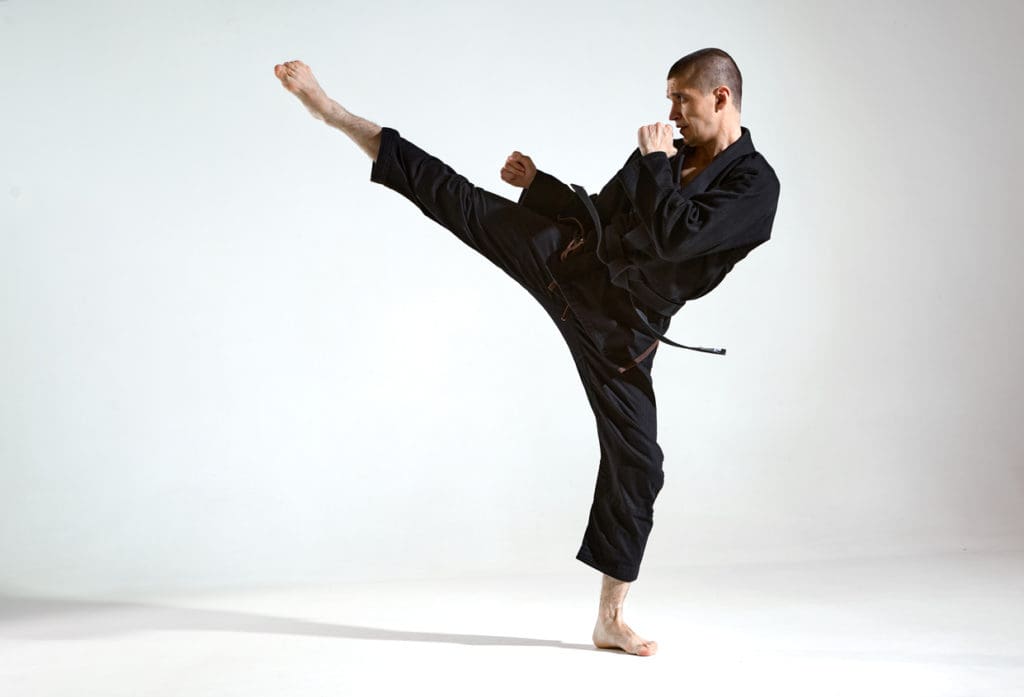
It's interesting to look at groups that can't afford to get it wrong because then opinion goes out the window. It's not like, “Oh, I use martial arts X,” or, “I do this.” If it doesn't work, they don't use it. It's a very utilitarian use of the tool.
What's interesting about that is they all look at things the same way. They will look at a 280-pound aggressive shock collar for one of the prisons the same way they look at a 12-year-old girl, meaning they just see the similarities in a body, not the differences.
Once I get my clients to have that mindset change where they no longer sit there and go, “Oh my God, this guy's so much bigger than me.” You say, “Oh, look, he has a throat, eye, ear, and side of the neck just like me. He's got the knees.” You start pointing out all the things that make him human. It's just an amazing switch in your mentality when you look at humans that way. It's very freeing in a lot of ways and it gives your brain direction.
That's the other thing. Oftentimes, the reason we freeze is because our brain doesn't know what to do in this situation and because we've never told it what to do. Understanding this information and studying it just a little bit makes a huge difference in how you look at subjects.
Is some of it that you're no longer looking at the threat aspects of the other person but the vulnerability aspects of it?
I trained a bunch of guys at the Mercantile Exchange in New York, a bunch of traders. What's interesting was those guys got it right away. We call it cause state. You always want to be in cause state and the other guys in effect state.
You always want to be in cause state and the other guys in effect state. -Tim Larkin Share on XGood friends of mine from another training system called Sayoc, my buddy Tom Kier, I actually like his way of saying it better. He said, “When it comes to violence, you're either a feeder or you're a receiver.” That resonated with the traders. What was interesting was that they understood it. We can think about trade all day, but nothing happens until we actually execute and we see what goes on, meaning you're not in control of the situation until you cause the effect.
That's what people get from this approach. It's like I can't focus on what he can do to me. It can be overwhelming. What I can focus on is I can still think and move. He is not taking that away from me, therefore, what's available to me? Your outward focus on that.
It's a subtle switch, but it's completely life-changing when you do it because you no longer worry about what's going to happen today. If somebody grabbed you and put you up against the wall, you can't do anything about that. That already happened. What's interesting is when you do this training, boom, “Oh, I can still think and move.” I look at the other guy and I go, “What's available to me right now?” You actually look at it as a gift. You look at grabs and anything that doesn't take your brain out of the equation as a gift.
You go, “Wow, they could have done that. They could've injured me and I couldn't do anything, but now, from this position, what can I do?” That's your starting point. I know some of it sounds like semantics, but it really isn't. Your brain's really interesting. When you give your brain permission to solve a problem, it goes out of its way to do it.
Yeah. Our brains are really, really good at solving problems. I joke about it with my wife, “You and I are very different. I have a programming issue and my brain will solve that problem in the night while I'm asleep.” When I wake up, I go, “There's a solution.” Our brains are just magical at finding ways to do things.
Yeah. What's interesting is your brain actually enjoys the process. A lot of people talk to me all the time that the physical was really interesting, but the change in how I think and how my brain looks at opportunities—even standing in line, people will sit there and go, “Oh, I'll notice that's where his ankle is.” It's just a dead time that they normally had in lines and they'll just think that, “Oh, in order for me to access that, I would have to be two steps closer.”
You don't tell people you're doing this, but what's interesting, though, is your brain will say, “Yeah, I'll start learning all this for you and just remind you once in a while.” I laugh because a lot of my entrepreneur buddies say it's incredibly valuable during depositions because they're looking at the attorney and they're going, “Oh, Tim said three buttons down is where the solar plexus is and stuff.” They use it for that type of interaction. Your brain likes the challenge once you show it. Nothing's more fascinating than the human species. The brain really wants to figure that out.
I just want to make sure as we're closing out. I want everybody to understand. I think physical training is incredibly useful because it will force behavioral change, but the goal is not to use the information. The goal is to sit there and go, “OK, how can I now create a life that minimizes the chance of violence ever entering it?” That is the greatest self-protection tool you can ever have. By going through a process like we talked about in this interview, you go a lot further along to that goal in a very short amount of time.
The best way to win a fight is to never be in a fight.
Absolutely.
I don't know if I got that saying right, but I know there's one similar to that.
If people want to find you online, where can they find you on social media, YouTube, or website?
YouTube is Tim Larkin, self-protection specialist. I've got a couple hundred videos up there. If you like some of the subjects that we're talking about, I interview a lot of other subject-matter experts, special operations community, prison people, and martial artists that are there, so you can get a wide variety of information that way.
If you want to learn about trauma to the human body and stuff, I also have a lot of information there for that. If you want to jump right in and experience some direct training, you can go to timlarkin.com. I have a free masterclass. Just give us your email and you get access right away. It truly is a free masterclass that you put out. If you enjoyed any of the subjects that we talked about today, that's a nice free way for you to get all the information.
That's totally awesome. Super appreciate the free content and the pivots that you've made during COVID to embrace the remote.
Yeah, it's been interesting. I wasn't sure how people would respond, but it's been really fun. I can go in-depth on topics that I normally don't have time for in some of the other formats.
That's really cool. Tim, thank you so much for coming on the Easy Prey Podcast today.
Appreciate it, Chris. Thanks.
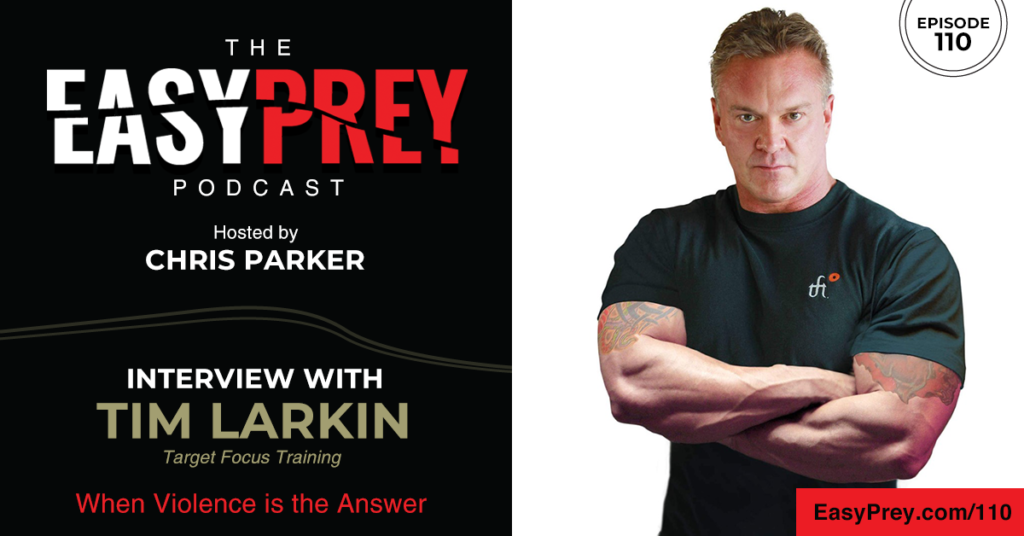
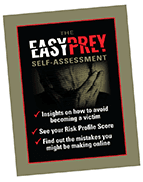
Learned a lot